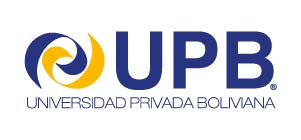Title of Project:
Production of concentrated bixin powders (annatto) from achiote seeds (bixa orellana), by means of spouted beds (2014 - 2018)
Project leader:
Ramiro Escalera Vasquez, Ph. D.
E-mail: rescalera@upb.edu
Researcher:
Carla Quiroga Ledezma, Ph. D.
Summary:
The achiote or urucú is a shrub that grows in several regions of the world including: the Amazonian zone of Brazil, Peru and Bolivia. the Caribbean, India and East Africa. In Bolivia, achiote occurs mainly in the subtropical areas of La Paz (Caranavi) and Cochabamba (Chimoré) and, on a smaller scale, in the mesothermic valleys. Its seeds are composed of an encapsulated inner core that contains oils, waxes, minerals and alkaloids; a crust composed of cellulose and tannins and an outer shell that contains pigments, moisture, cellulose, sugars and a small amount of oils.
The main pigment in the seed episperm is red carotenoid bixin (about 90% of the total pigments), which must be removed and concentrated to produce annatto. Annatto ranks second among the natural dyes used in the world. It is used as a food coloring for human consumption and balanced foods, waxes and pharmaceutical and cosmetic products. Bixin is preferred instead of synthetic dyes due to its lack of toxicity that satisfies regulations in its different uses as a dye. On the other hand, annatto is marketed in the form of powders, pastes and alkaline/oil solutions.
The conventional technique to obtain or concentrate the pigment is the extraction by solvents that can be organic (chloroform, dichloroethane, acetone among others) or aqueous alkaline solutions. However, the process is quite expensive, requiring several stages where recoveries of useful pigments are not high (2 to 4%). Another disadvantage is the low solvent recovery, and the occurrence of oxidative and thermal degradations and the limited use of the extract residues. On the other hand, the cost of transporting untreated seed (2 to 4% bixin) is high. For this reason, on the basis of preliminary tests carried out at CIPI, which have shown higher concentrations of bixin (up to 16.5%), compared to commercial products (8 to 12%), it is intended to study the dry production of annatto by means of Spouted Beds to optimize processing times using laboratory scale devices.
The study includes the following stages:
- Characterization of Bolivian varieties of achiote seeds, in terms of their bixin content, to determine their potential as a raw material.
- Use of flow guides and abrasive materials in powder recovery.
- Determination of optimal processing conditions to maximize the recovery of bixin on a laboratory scale, using an appropriate statistical experimental design.
References about the project: rescalera@upb.edu
